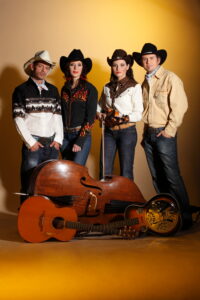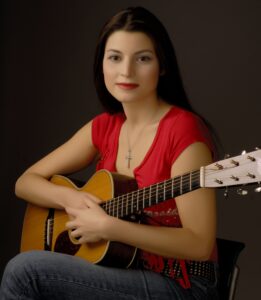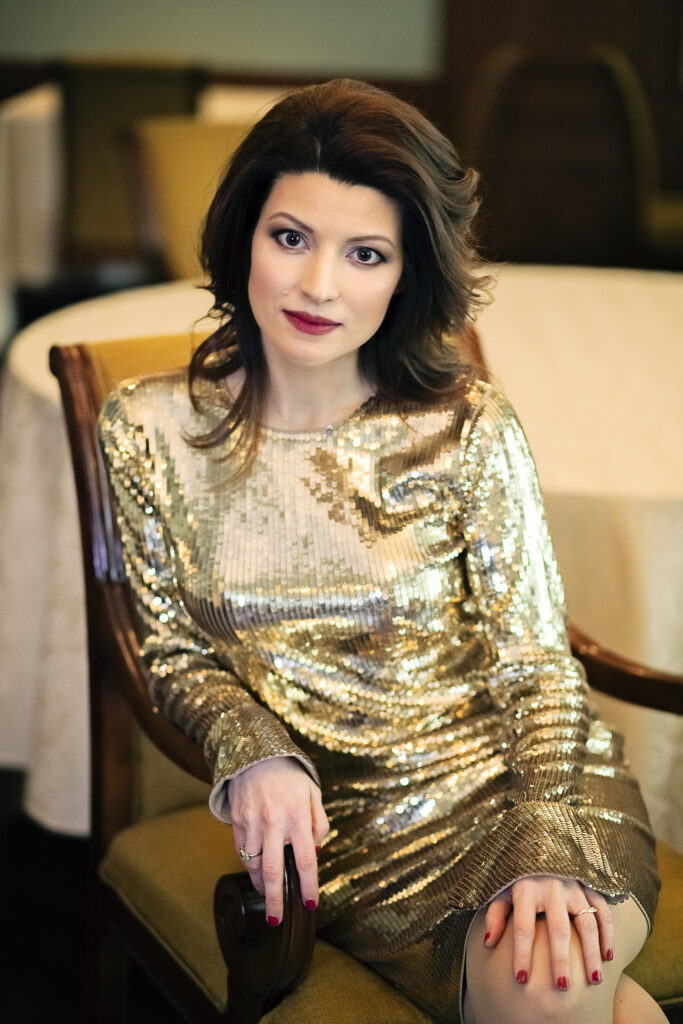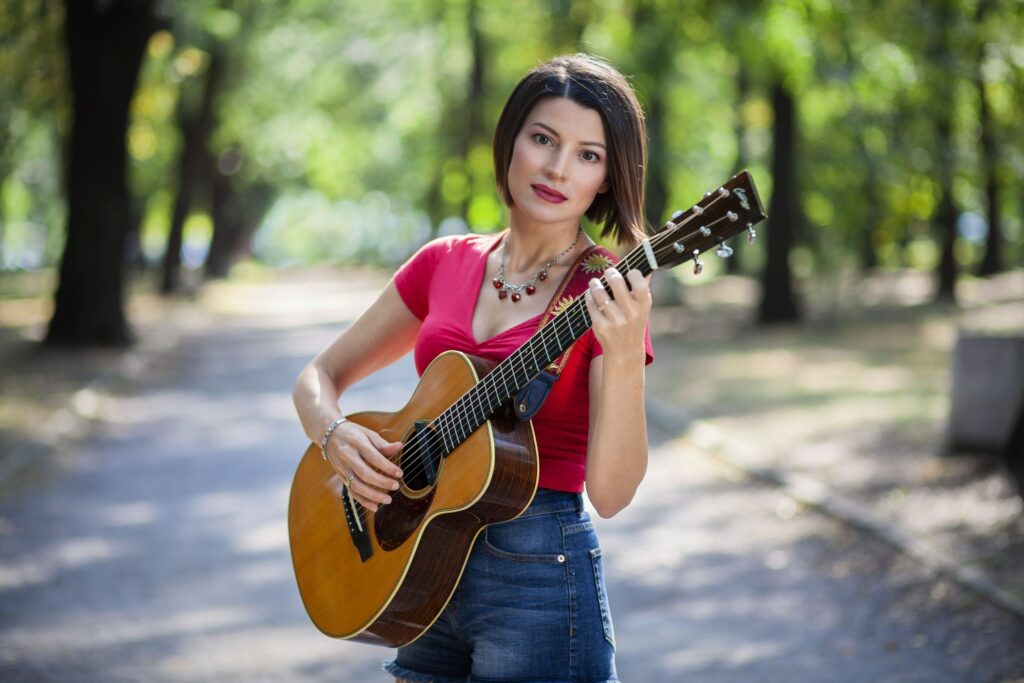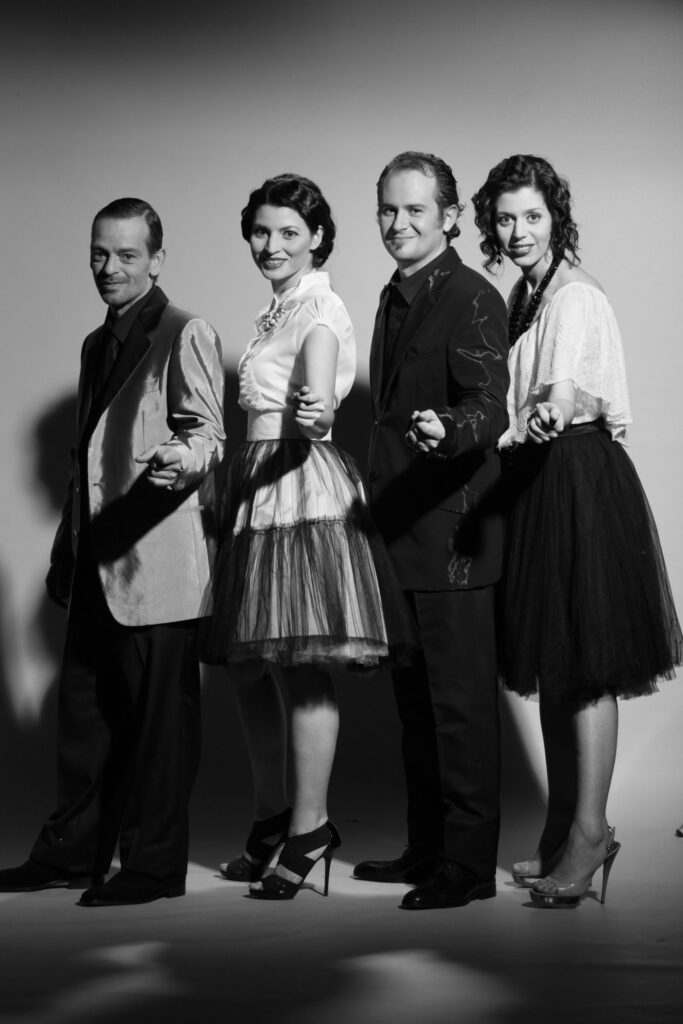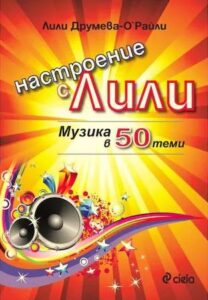RaShe Jennings
“When I hear bluegrass I feel at home!”
Interview with RaShe Jennings, International Bluegrass Music Museum
© Lilly Drumeva-O’Reilly.
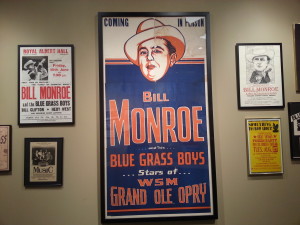 In late August I travelled to Owensboro, KY in order to visit the birthplace of Bill Monroe (father of bluegrass) and the International Bluegrass Music Museum. I was warmly welcomed by its director, Gabrielle Gray. She is an amazing lady, very smart and stylish, who works hard to raise the museum’s funding.
In late August I travelled to Owensboro, KY in order to visit the birthplace of Bill Monroe (father of bluegrass) and the International Bluegrass Music Museum. I was warmly welcomed by its director, Gabrielle Gray. She is an amazing lady, very smart and stylish, who works hard to raise the museum’s funding.
Gabrielle introduced me to RaShe Jennings (curator of collections), who provided various books and files for my research. RaShe is a beautiful redhead, with pale skin and blue eyes. She answered some of my questions such as:
– RaShe, you have an interesting name, where does it come from?
My mother and my brother created it. They basically made it up. They went through different combinations like LaShe, TaShe and in the end they chose RaShe.
– Do you have French ancestors?
No, they are Irish. My first name is actually Loren. So it is: Loren RaShe Jennings. I go by my middle name.
– Please introduce yourself a little, what is your job like?
I am the curator of collections at the International Bluegrass Music Museum here in Owensboro, Ky. My job is basically to catalogue and research all bluegrass items that are donated here; to store those items properly so that they are preserved for many hundreds of years. I provide assistance to people who would like to do research here.
– You are a graduate of the Folk Studies program at Western Kentucky University?
Yes, I graduated there in May 2011 with a Master’s degree in Folk studies. My teachers were Dr. Erika Brady, Dr. Michael Ann Williams.
– It is a good thing that you found a job close to home and so recently after graduation?
Yes, I was raised in Tompkinsville, KY, on a small 200 acre farm; we raised garden vegetable and beef cattle there. I am still able to go home quite often.
– Are you a musician?
No, but I love music in all forms and varieties! I had some piano lessons as a child. But, no, I don’t play anymore.
– What kind of music do you like?
I love bluegrass. I love also rock, blues, country and classical music.
– What do you like about bluegrass?
I love the sound of it; it is an association with home. When I hear bluegrass I feel at home. When you are raised in Kentucky, you hear it everywhere.
One of my fondest memories is my father singing me Bill Monroe songs. He plays guitar, and I have some cousins who play in bluegrass bands. When we get together at family reunions, we play bluegrass.
– What are bluegrass songs about?
Love, God, sadness, lost love, home…
– Country music nowadays is very pop orientated. Do you like this?
I think that every genre of music has to change; it is inevitable. I like mainstream country that sounds close to pop. I think it is a good thing, because it attracts younger people. If you don’t get young people to follow, then your genre will die. I like the new bluegrass as well, the artsy and beaty sound of the new grass bands. Without attracting a younger generation, the genre will die.
– What do you think about bands such as Mumford and Sons and The Lumineers? Are they a good thing for bluegrass and American folk?
I love them! I think they are wonderful. They produce a sound that is beautiful, catchy and interesting. This can only expand bluegrass and make it even more wonderful. I don’t think it is spoiling the traditional view of bluegrass at all.
– Why are there more elderly people at bluegrass festivals?
The older generation is more religious. They grew up with gospel music. They like to hear this type of old, gospel bluegrass. This is the music they grew up with.
– What do you think needs to be done in order to attract young people?
Bluegrass communities should be more open-minded. They should accept young bands, which swing towards Mumford and Sons or blend other genres.
– Do you think bluegrass musicians should dress up a bit on stage or make professional videos?
I do! Maybe the problem is that there is not much money in the bluegrass industry. In country music there is a lot of money and record labels can afford to produce videos. I remember when Shania Twain came out, everyone in Nashville was shocked about her belly button being shown! I thought it was ok. She is a beautiful person and there is nothing wrong with it. I am not saying that bluegrass musicians should show off belly buttons, but a nice, interesting, creative style would be helpful.
– What about the social aspect of bluegrass?
I think it is great. Even if you play badly, you are still accepted. By playing with other people, you become better over time. When you are good you enjoy helping others. And it continues like this…
-Tell me about the International Bluegrass Music Museum?
The institution was formed around the 1990s. It was part of the International Bluegrass Music Association. Eventually, IBMA moved to Louisville, then to Nashville and the museum remained here. The letter received a grant of around 3 million dollars from the state and it started to operate. It is a non-profit organization; it raises funds through several sources. One is the annual ROMP festival, created by museum director Gabrielle Gray.


